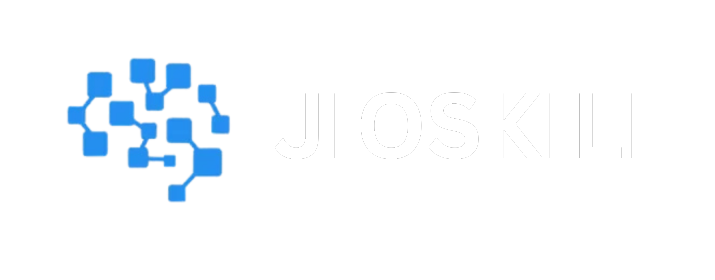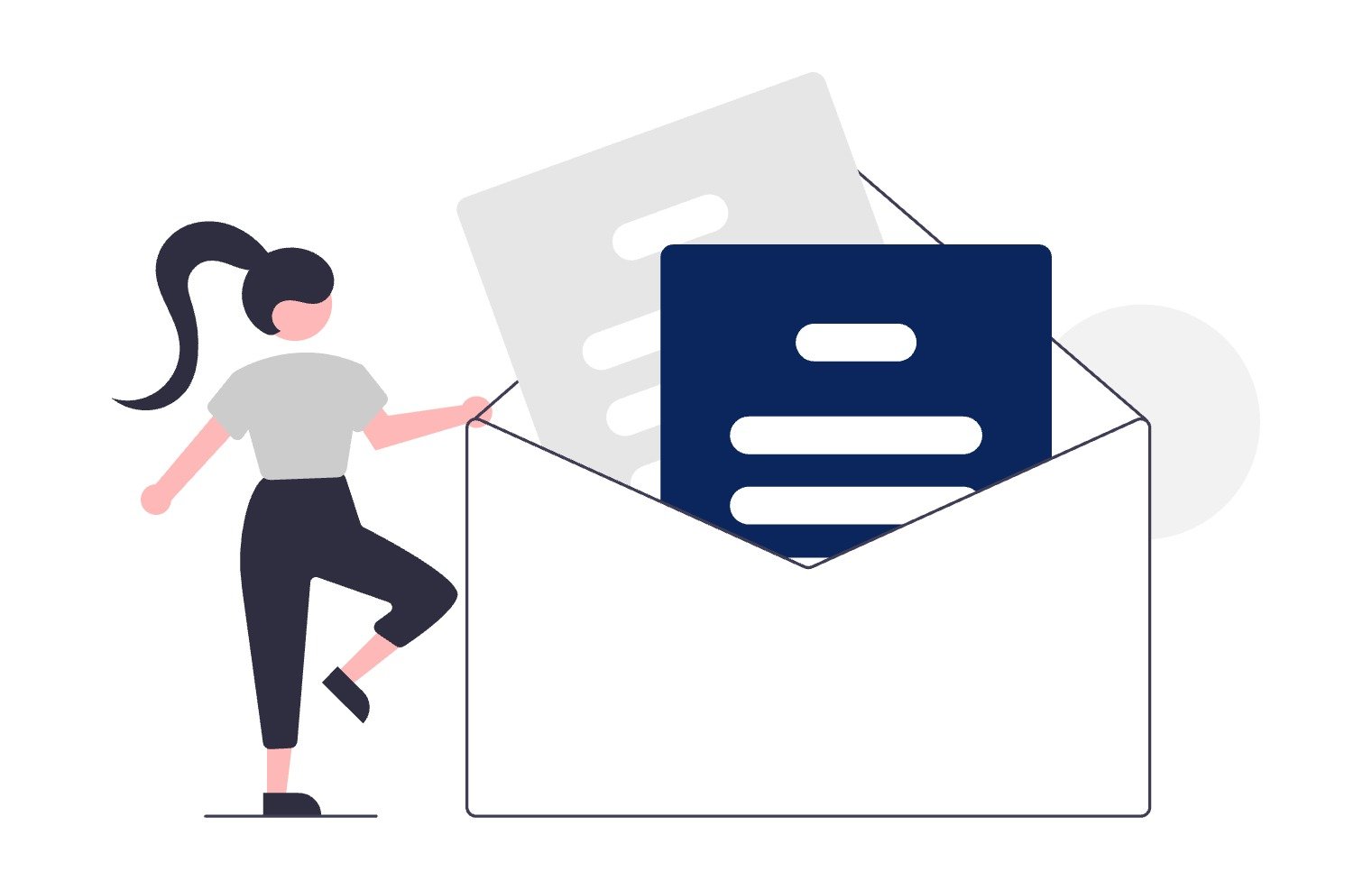Currently Empty: ₹0.00
How AI is Transforming Digital Marketing in 2025 and Beyond
Table of Contents
ToggleAI in Digital Marketing
AI in Digital Marketing: From Data to Decisions
Problem: Too Much Data, Too Little Direction
Every digital marketer has experience. You sit for hours studying analytics dashboards, A/B tests, audience reports, and social engagement metrics, to conclude you have no idea what to do next.
How AI is Revolutionizing Digital Marketing in 2025 and Beyond.
What AI in Marketing Has in Store.
AI Digital Marketing Tools

The issue isn’t insufficient data. Businesses are now gathering more marketing data than ever. The challenge is to interpret it quickly enough to react. Marketers have questions: AI in Marketing.
What kind of content will attract our audience?
Which media channel is providing us with the best ROI?
How do we personalize marketing without violating privacy guidelines?
Do we have the ability to optimize budget distribution before wasting spend?
Traditional marketing tools respond to some of these questions, but too late or with too much human effort, too often. Throw in the increasing customer expectation for real-time response and personalization, AI in marketing, and it’s obvious: the old marketing playbook is not sufficient.
Issue: The Risk of Doing Things the Old Way
This is what happens when marketers continue to use old-school tools and gut feeling in today’s market:
Campaign Delays: Too much time is wasted planning and analyzing rather than doing.
Wasted Budget: Ads are running on sites that aren’t converting. Audiences are retargeted with irrelevant messaging. Money vanishes with little to display.
Poor Personalization: Customers receive emails or content that fails to resonate with their interests. Accenture says 91% of customers are likely to shop with brands offering relevant offers, yet too many marketers still can’t manage.
Team Burnout: Marketers chase numbers, redo reports, and rush to meet content requirements. Strategy takes a backseat.
And the market isn’t waiting. Competitors are leveraging AI to do more with less — automating campaign delivery, tailoring user experiences, and finding trends before they go viral.
Case Study: Starbucks’ Use of AI to Personalize Customer Experiences
Starbucks sells more than just coffee, it gathers customer information via its mobile app, rewards program, and in-store purchases. In 2023, AI in Marketing, Starbucks began an in-depth incorporation of AI in its digital marketing efforts with the use of a tool it has termed Deep Brew.
The Problem
Starbucks needed to fuel greater engagement via personalized offers. But with tens of thousands of stores and millions of users, AI in Marketing made doing it by hand impossible.
The Issue
Generic promotions were not working. Customers were being offered deals that were not aligned with their habits or preferences. AI in Marketing, Email promotion redemption rates were declining.
The Solution
With Deep Brew, Starbucks began to analyze customer behavior at scale. The AI learned:
What time of day do users tend to order
Their go-to drink or food items
Whether they react to discounts or points
Seasonal or regional preferences
The platform next created customized offers, not only based on what customers purchased, but when, where, and how frequently, AI in Marketing.
Results:
Starbucks recorded a 150% lift in offer redemptions within six months.
38% increase in email engagement.
Shopper visits improved during slack periods by targeted timing.
It was not a guess that paid off. It was AI transforming raw customer data into timely and applicable offers that people acted upon.
The Future: What AI in Marketing Has in Store

1. Autonomous Campaigns
AI platforms will soon create, deploy, test, and optimize entire campaigns without the involvement of humans — marketers will merely define goals and guardrails.
2. Emotion Recognition
With sentiment analysis, facial recognition, and voice tone analysis, AI in Marketing, AI will adapt content to what users feel in the moment.
Example:
Brands are testing video ads that dynamically adjust length or message based on viewer response measured by webcams (opt-in, privacy-compliant).
3. Privacy-Friendly Federated Learning
As data privacy laws become more stringent, AI will learn from user behavior through anonymized, distributed training without collecting personally identifiable information.
In conclusion, AI refocuses marketers rather than replacing them.
Marketers can now move more quickly, test more intelligently, and personalize at scale thanks to AI. But it never replaces strategy, brand storytelling, or customer empathy.
In 2025, the best marketing teams are the ones that apply AI to deal with the data, analysis, and automation, and then devote more time to doing what human beings do best:
Understanding audience emotions
Crafting long-term narratives
Building trust
The tools are available. The case studies bear fruit. The change is underway.
How AI is Revolutionizing Digital Marketing in 2025 and Beyond
Problem: Marketing Is Rich In Data But Poor In Insights
Marketers now have more tools and data than ever before in this era of the digital age. But most teams are still unable to translate all that data into concise, profitable decisions.
Spreadsheets, analytics dashboards, CRM reports, just the beginning. Brands now track social media interaction, customer sentiment, SEO trends, and email metrics, sometimes across multiple platforms. The problem isn’t gathering data; it’s applying it in a manner that drives results.
In 2025, the majority of marketing teams are still using manual workflows, guesswork, and tedious A/B testing. The need for personalization at scale, predicting customer behavior, and driving quantifiable ROI is higher than ever before. And for most, the tools and methods they’ve relied upon thus far aren’t keeping up.
The gap between AI-powered companies and those that aren’t is growing.
According to Salesforce’s State of Marketing 2025 report, 68% of top-performing marketing teams say AI is critical to their success compared to only 22% of underperforming teams. That says it all, AI is not an investment in the future; AI in Marketing, it needs to happen today.
Solution: The Real Cost of Falling Behind
What occurs when your marketing isn’t powered by AI?
Let’s look at the numbers:
38% of CMOs in a recent Gartner survey admitted they were not able to identify which campaigns drive ROI.
A McKinsey report towards the end of 2024 showed that brands using AI-driven personalization drove 10–20% more revenue than brands using static, rule-based segments.
HubSpot’s State of Marketing Report 2025 found that companies employing manual marketing processes spend 23% more on average per lead.
That’s a budget issue only, it’s a growth opportunity lost.
Frustration also goes deeper than that:
Campaigns are implemented without knowing the first thing that will work.
Content is being created that nobody ever engages with.
Customer experiences are impersonal and generic.
Marketers invest hours on end creating audience segments and analyzing outcomes. But by the time they react, the wave is gone or the customer has moved elsewhere. Speed and relevance are most important in fast-evolving markets, and AI is the answer that brings both.
Let’s look at a real case that illustrates what AI can do when used correctly.
Case Study: Coca-Cola’s Use of AI in Digital Campaigns
Coca-Cola in 2023 launched a marketing overhaul program based on AI. Some of the projects included were the “Create Real Magic” campaign, where they encouraged creators and artists to make Coca-Cola content using an AI platform fueled by OpenAI and Bain & Company.
The Problem
Coca-Cola had to reach out more to Gen Z and younger millennials. Traditional ads were not cutting through on platforms like Instagram, AI in Marketing, YouTube, and TikTok. They needed something new and interactive that encouraged user participation.
The Agitation
They observed lower engagement on digital platforms and lower conversion from social media to branded microsites. Market research indicated that younger audiences were looking to co-create and participate, not just watch.
The Solution
By using an AI-driven content generator, the “Create Real Magic” campaign allowed users to design Coca-Cola-themed art with prompts. The campaign had incorporated social share capability, AI-driven musical overlays, and a streamlined creation process for sharers to distribute content across the networks.
Results:
Over 120,000 AI-generated artworks in the first two weeks
30% lift in Instagram engagement rates compared to last year’s campaign
3x increase in branded hashtag usage on TikTok
AI wasn’t gimmickry, it drove real engagement by giving the audience tools for creative involvement. And it allowed Coca-Cola to have better insights into what visual trends and concepts worked best with which audiences.
Solution: How AI Is Reshaping Marketing in 2025
Let us break down how AI is directly impacting digital marketing activities in 2025 in terms of five significant categories.
1. Predictive Analytics for Campaign Strategy
Old method: Experiment with ads, track performance, and adjust after results are received.
AI method: Predict the outcome even before you begin executing.
Bidding tools like Google’s Performance Max and Meta’s Advantage + today use predictive models to determine which ad creatives, targets, and budgets are best, even before your campaign begins.
Example
An e-commerce brand used Google’s AI-driven ad model to run a Spring 2025 campaign. The platform spent a predictive analysis-inspired 70% of the budget on video ads and only 30% on static images. And what was the result? 17% more efficient ROAS than manually launched campaigns.
2-AI-Facilitated Content Creation
Tools like Jasper, Copy.ai, and ChatGPT currently assist in composing headlines, email content, blogs, and even scripts.
But in 2025, it’s not all about words.
AI applications review what type of content is working on what platform, and make adjustments in real-time. For example, if LinkedIn engagement is higher on posts less than 100 words, the AI suggests trimming content before publishing.
Statistics:
Content Marketing Institute’s 2025 report says that content teams using AI increased output by 40% and reduced editing time by 25%.
3-Personalization at Scale
AI allows brands to move away from mass messaging and towards behavior-based, real-time personalization.
Example:
Personalization of thumbnails for viewers based on what they have watched is done by Netflix. The same is now done for commerce.
Shopify Plus merchants can, in 2025, deliver tailored homepage experiences based on AI-driven browsing patterns, without having to configure manually.
Outcome:
Conversions on the homepage of one Shopify business, which sells health supplements, increased by 29% after turning on AI-driven dynamic personalization.
4-AI Chatbots and Automated Support
The AI chatbot of 2025 is smarter, faster, and far more native-sounding.
Tools like Zendesk AI, Intercom Fin, and Microsoft Copilot for Service now answer 60–80% of support queries automatically, and become more capable with each conversation through learning.
Why it matters:
Better support equals better retention. Harvard Business Review found that an increase in retention by 5% increases profits by 25–95%. AI assists in making support more productive without sacrificing quality.
5-Real-Time SEO Optimization
AI tools now monitor keyword trends, competitor rankings, and traffic performance in real-time, not monthly.
Surfer SEO and MarketMuse both give real-time optimization suggestions while you compose, which gets content ranked faster.
In 2025, AI will also used to optimize metadata, headings, and image descriptions based on how users search using voice and images, and not texts.
Stat:
In 2025, according to a 2025 Ahrefs report, businesses using AI-powered SEO tools were 43% more likely to reach the top 3 positions on Google within 60 days of publication.
Q1: What Marketers Are Doing Differently in 2025
AI has not just changed the tools that marketers employ but the way they work as well.
Here’s what top teams are doing:
Testing Quicker: With AI, marketers test hundreds of creative variants within a week, not a month.
Personalizing Deeper: AI enables user-specific experiences at scale. Say goodbye to one-size-fits-all campaigns.
Planning Smarter: AI predicts trends and shifts in demand before they happen.
Real-Time Measurement: Dashboards refresh in real time with actionable information, not delayed after-action reports.
And perhaps the biggest shift?
Marketers are spending more time on strategy and less on tedious tasks. The shift is from doing everything manually to telling AI tools to do the heavy work.
Q2: What’s Coming Next: After 2025
Marketing AI is not yet done changing. Below are some up-and-coming trends already gaining traction:
Autonomous Campaigns
Applications such as Omneky and Replai now design, test, and optimize ad creatives on autopilot. Marketers define budget and tone, and AI handles the rest.Targeting Based on Emotions In order to help marketers focus their messaging on affective states rather than demographics, AI is starting to analyze tone, expression, and emotion in user behavior.
Augmented reality (AR) AI will be in charge of dynamic interfaces that react to user activities in real time as augmented reality becomes more common in retail and experiences. AI in Marketing
Decentralized Data, Centralized AI
Data privacy regulations are closer. But AI models in 2025 operate without accessing raw personal data, AI in Marketing , using federated learning and anonymized behavior patterns.
AI Digital Marketing Tools

1. Content Creation and Optimization
AI tools now assist marketers in creating, rewriting, AI in Marketing, and repurposing content for the audience and channel, without having to begin from scratch.
Top key tools:
Jasper: Creates blog posts, ad copy, and social media posts
Copy.ai: Best for product copy and email copy
ChatGPT: Used in scripts, ideas, and long content
Use case:
One e-commerce business used Copy.ai to generate thousands of pre-made product descriptions. The team inputted bullet points, and the AI produced SEO-optimized content. This saved over 200 hours of manual labor in 3 months.
2. Predictive Campaign Management
No longer guesswork about which audiences, formats, and creatives to run. AI in Marketing,
AI platforms now forecast what audiences, formats, and creatives will perform before you spend.
Key tools:
Google Performance Max: Automatic bidding for ads on Google’s entire network
Meta Advantage+: Boosts creative delivery on Facebook/Instagram
AdCreative.ai: Serves up high-performing creatives from historical campaign performance
Use case:
A SaaS business used AdCreative. AI in Marketing, ai to try out many hundreds of creative versions. The AI observed which images and CTAs were converting and naturally tended towards those. CTR improved by 22% in a quarter.
3. Personalization Engines
AI personalization tools modify offers, headlines, products, and emails according to what the user is doing, in real-time.
Most important tools:
Dynamic Yield: eCommerce site personalization
Klaviyo AI: Predictive segmenting and email flows
Optimizely AI: Real-time web and mobile A/B testing
Use case:
A fitness brand utilized Klaviyo’s AI to build dynamic email copy. Based on the customer’s recent behavior (purchase, click, visit), AI in Marketing, the email altered its subject line and inserted products. This boosted click-through by 39%.
4. Customer Support and Engagement
AI bots now answer high volumes of user questions, qualify leads, and keep the conversation going, particularly on busy sites or social media.
Key tools:
Drift: B2B sales chatbots that capture and qualify leads
Tidio: Chatbots on eCommerce websites
Zendesk AI: Self-serving, simple support tickets
Use case:
A DTC skincare company used Tidio to implement automated basic customer support, order tracking, product questions, and return questions. AI in Marketing, 80% of problems were solved without human intervention ,and response time fell from 10 minutes to an instant.
5. SEO and Content Planning
AI SEO tools assist teams in article planning, keyword hunting, and optimizing on-page elements to optimize organic visibility.
Major tools
Surfer SEO: Real-time ranks and optimizes content
Frase: Generates briefs and analyzes SERP content
MarketMuse: Maps gaps and constructs topic clusters
Use case:
A finance blog utilized Surfer SEO and Frase simultaneously. AI in Marketing, Content was drafted with Frase’s short, optimized with Surfer, and finally published. The blog accumulated 150K organic views/month within only 3 months with no paid advertising.
6. Analytics and Reporting
Rather than exporting spreadsheets and creating pivot tables, AI analytics platforms provide pre-formatted results now.
Most essential tools:
HubSpot AI: Forecasts lead scoring, sales likelihood
Salesforce Einstein: Campaign insights and pipeline forecasting
Tableau GPT: Natural language interface for visual data insights
Use case:
A B2B software company utilized Tableau GPT to automate reporting for the CMO. Rather than investing hours creating charts, the team would pose questions such as “What was the top-performing channel that was delivering the most high-LTV customers last month?” and receive instant graphs.
7. Visual and Video Tools Powered by AI
AI tools now assist in turning blog posts into videos or changing visuals depending on performance.
Major tools:
Pictory: Turns blog posts into short videos
Lumen5: Automatically generates video content from text
Runway ML: AI video editing for short-form videos
Use case:
Weekly blog posts were converted into Instagram Reels with Pictory. AI in marketing, each video included headlines, B-roll, and voiceover; all handled automatically. Instagram following increased by 60% in 6 months with little additional effort.
Picking the Right Stack: A Tip That Never Fails
You don’t need every AI tool, you need the proper mix for your stage and objectives.
Stage of Business Priority AI Tools
Early-stage businesses: Copy.ai, Klaviyo AI, Tidio
Mid-market SaaS Jasper, Google PMAX, Drift
DTC eCommerce, Dynamic Yield, Meta Advantage+, Surfer SEO
Enterprise Salesforce Einstein, Tableau GPT, Zendesk AI




